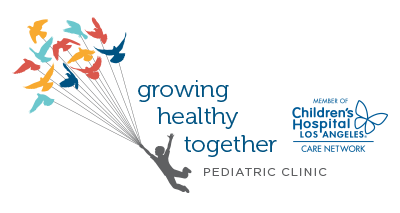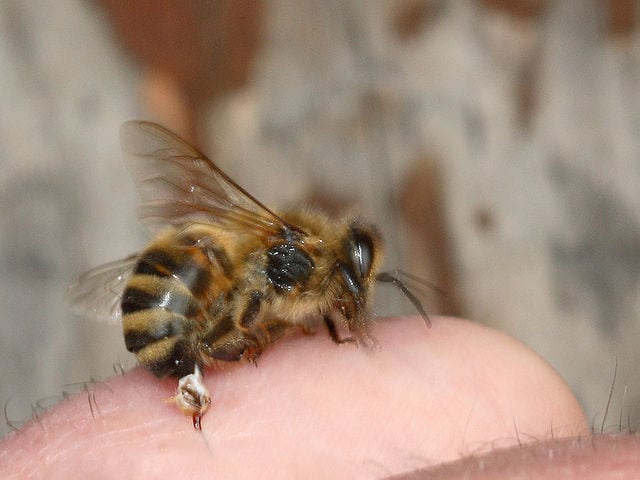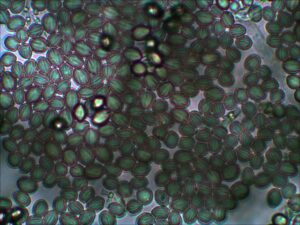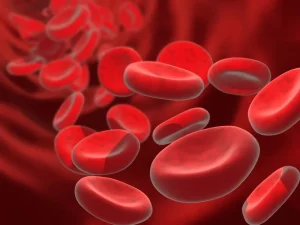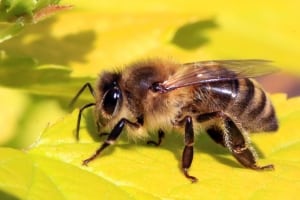
The freedom of summer brings with it many bites and stings that are usually harmless if a tad painful. They will usually go away on their own without an issue. However, some bites or stings may require more attention. Some kids have severe reactions that require immediate medical care. Read on to find out more about bug bites and stings.
Signs and Symptoms of Bites and Stings
- Pain
- Redness
- Swelling
- Itching/Burning
- Numbness/Tingling
You can treat insignificant bites and stings at home by washing the site thoroughly with soap and water. If your kid is complaining that a bite is itchy or painful, ice the site. We recommend wrapping ice in a cloth and applying it on for 10 minutes, off for 10 minutes, and repeat until the pain subsides. If the pain, itching, or swelling persists, you can give your kid a dose of children’s Benadryl or use an anti-itch cream. You can also try applying oatmeal, apple cider vinegar, honey, or aloe vera to the site to decrease pain. Don’t give them pain medication, aspirin, or stimulants unless they’ve been prescribed by your pediatric healthcare provider. In some cases, antihistamines or topical steroids may be needed.
Anaphylaxis
Some kids have extreme reactions to bites or stings. Their immune system may go into hyperdrive, causing their blood pressure to drop and their airways to constrict. This reaction is referred to as anaphylactic shock and must be treated immediately.
Remove any jewelry or constricting clothing in case of swelling. If your child has a history of serious allergic reactions to bites or stings, we likely don’t need to remind you to be sure to carry their EpiPen during times of the year when bites and stings are more common (i.e. summer). If you suspect your child is experiencing anaphylactic shock, check their airway and breathing.
Symptoms of anaphylaxis:
- Chest pain
- Face or mouth swelling
- Difficulty swallowing
- Difficulty breathing
When to call 911:
- Severe swelling in the face or mouth
- Difficulty breathing
- Throat tightness, difficulty swallowing
- Turning blue
Types of Bites
Spider Bites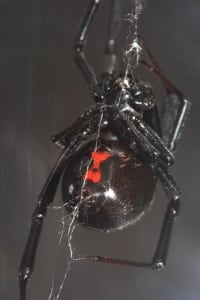
Most spider bites are harmless and may not even be detected. Spider bites cause a range of reactions. If you can, catch the spider and bring it with you for identification. Certain bites, like the bite of the black widow or brown recluse, can be serious or even life-threatening.
Bee Stings
Unless your child has an allergy to bee stings, they are harmless. The stinger should be removed by scraping a straight edge (credit card) across the stinger. Don’t grab it with a finger or with tweezers because this will cause more venom to be released into the site.
Other Insect Bites
There is a myriad of insects in southern California, most of which are harmless. Fire ant bites can be painful, while mosquito and flea-bites can be really itchy. Mosquitos sometimes carry viruses, so avoid them to limit the risk of infection. Refer to our February Zika blog to learn how to avoid mosquito bites.
Skeeter Syndrome
 Some people, usually the very young or those with weakened immune systems, have a reaction to mosquito bites. Skeeter syndrome describes a reaction to a mosquito bite causing fever and large areas of redness and inflammation at the site. This reaction typically occurs very quickly after the incident of the bite. Some report bruising, blistering, and eventual scarring at the site. We typically recommend an antihistamine for those with extreme reactions to help decrease your symptoms. If you are experiencing a severe reaction to a mosquito bite, contact your healthcare provider.
Some people, usually the very young or those with weakened immune systems, have a reaction to mosquito bites. Skeeter syndrome describes a reaction to a mosquito bite causing fever and large areas of redness and inflammation at the site. This reaction typically occurs very quickly after the incident of the bite. Some report bruising, blistering, and eventual scarring at the site. We typically recommend an antihistamine for those with extreme reactions to help decrease your symptoms. If you are experiencing a severe reaction to a mosquito bite, contact your healthcare provider.
Snake Bites
Snakebites have the potential to be quite dangerous and in some cases lethal. There are some snakes that we know have venomous bites, but many of us can’t discern whether a snake is venomous or not. If your child is experiencing a reaction to a venomous snakebite, emergent medical treatment with anti-venom is required. Anti-venom is specific to each snake, so be very observant of what the snake looks like.

In California, we don’t have many dangerous snake species. Keep a special eye out for rattlesnakes and sea snakes, both of which are venomous. Rattlesnakes are sometimes confused with gopher snakes, but only rattlesnakes have a tell-tale rattle on their tail, which they will shake if agitated. Sea snakes usually have brightly colored cues that indicate that they are venomous. In general, avoid things in nature that have bright colors. Bright coloration usually, though not always, indicates that an animal or insect is poisonous or venomous.
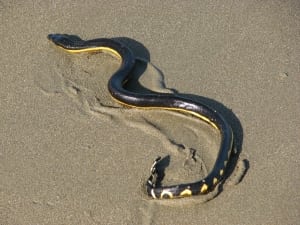
If your child is bitten, your instinct might be to try to stop the spread of the venom. In the case of a snakebite, it’s important not to use a tourniquet and cut off blood flow. This can worsen the effect of venom.
According to the WHO, “worldwide, up to five million people are bitten by snakes every year. Of these, poisonous (envenoming) snakes cause considerable morbidity and mortality.” Most snake bites occur in Africa and Asia and among people living in rural or agricultural environments.
Most of our patients here at GHT are at low risk of suffering from a snakebite, but it’s always a good idea to be watchful in your environment.
Prevent snakebites:
- Avoiding tall grassy areas
- Wear protective shoes
- Rid your home of rodents
- Keep your home clear of hiding places for snakes (wood piles, piles of brush, trash)
- Be alert and observant in environments frequented by snakes.
Dog Bites
 Dog bites account for tens of millions of injuries annually. The highest risk of dog bites is among children. Teach your children good dog etiquette. Never leave a child unattended around an unfamiliar dog. Avoid stray dogs. Ask a dog’s owner before petting them.
Dog bites account for tens of millions of injuries annually. The highest risk of dog bites is among children. Teach your children good dog etiquette. Never leave a child unattended around an unfamiliar dog. Avoid stray dogs. Ask a dog’s owner before petting them.
Teach your child what certain cues may mean in dogs. For example, if a dog is growling and their lips are pulled back, we should stay away. If a dog has its tail between its legs and looks scared, we should stay away. If the owner says the dog is friendly and the dog is wagging their tail, we can let them sniff our hands before we try to gently pet them.
Treatment of dog bites:
- Cleansing of wound
- Antibiotics
- Rabies treatment (series of rabies vaccines)
- Tetanus vaccine
Cat Bites
Cat bites are lower in incidence than dog bites, though otherwise, the two are very similar. Treatment of cat bites is the same as with dog bites.
Use Repellent
Vaccines are not available for all insect-borne diseases, including mosquito, tick, and fly-borne diseases. The CDC recommends using products containing DEET, picaridin, oil of lemon eucalyptus, PMD, IR3535, or 2-undecanoate in order to repel insects. While DEET and picaridin are both synthetic pesticides associated with some safety concerns, the others listed are biopesticides that are derived from natural materials. Repel, Off! Botanicals, Skin So Soft Bug Guard, Skin Smart, and Bio UD all carry products using biopesticides. We also like to use DoTERRA’s TerraShield essential oil blend to repel insects.
These products often offer 1-2 hours of protection, so stock up before traveling or spending extended periods of time outdoors during the warmer months. In addition, consider using a permethrin repellent for your clothing and gear. Never apply permethrin to the skin and only to clothing and gear.
Repellent Precautions
- Always read all product labels carefully.
- Apply only to exposed skin or clothing, and never on skin protected by clothing.
- Do not use it on cuts, wounds, rashes, or irritated skin.
- Do not spray the repellent directly on the face. Spray onto hands first and then apply on the face. Adults should use this method for applying repellent to children.
- Wash hands after application. Do not apply to the eyes or mouth.
- After use, wash repellent-treated skin with soap and water, or bathe. Wash permethrin-treated clothing before wearing it again.
- If you experience a rash or reaction to a repellent, wash off the product immediately. Try a different repellent.
- For severe reactions, call your local poison control center. If you need to visit the local urgent care or emergency department for a reaction, always bring the product with you to show the medical staff.
Rabies
Rabies is a significant health concern following dog bites, cat bites, and wild animal bites. The WHO estimates that 4.5 million people are bitten by dogs every year, including 10-20 fatalities in the US per year.
The American Academy of Pediatrics reports that “rabies is a virus commonly found in wild animals in the U.S., especially in bats, raccoons, skunks, coyotes, and foxes. The virus can be transmitted in the saliva of a rabid animal to a person through a bite or open wound. Worldwide, approximately 55,000 people die each year of rabies, and nearly half are children.”
Symptoms of rabies:
- Flu-like symptoms (weakness, fever, headache)
- Discomfort
- Prickling or itching of the bite site
- Anxiety
- Confusion
- Agitation
- Delirious
- Hallucinations
- Insomnia
The CDC reports, “Once a person begins to exhibit signs of the disease, survival is rare.” If you suspect that your child has been bitten by an animal infected with rabies, it is absolutely necessary that you seek immediate medical attention.
Be respectful of animals and wildlife.
Be careful to dispose of trash in the correct bins. Protect yourself with clothing and repellent, if necessary. We recommend diluting DoTERRA’s Terrashield and rubbing on the skin, or diffusing it. Be respectful of your environment and the living things around you. Remain calm and make slow deliberate movements in the presence of animals. Educate yourself and your children about the animals common in your region.
Finally, there is no need to touch wild, or even domesticated, animals. We, humans, have this need to grasp things in our hands to learn about them or to feel connected to them, but touching other species can be scary and threatening for them. Be mindful of other creatures and their space.
